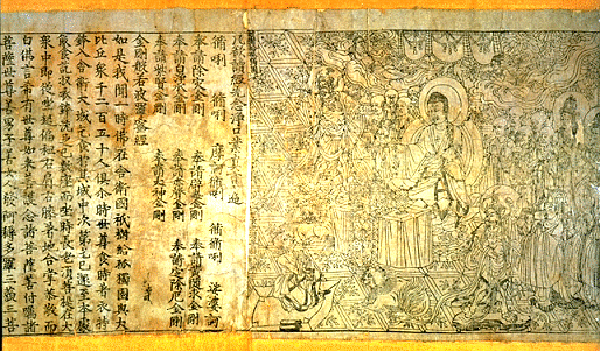
The Diamond Sutra also called Vajra Cutter Sutra is a short Mahayana sutra of the Perfection of Wisdom genre, which teaches the practice of the avoidance of abiding in extremes of mental attachment. A copy of the Diamond Sutra, found among the Dunhuang manuscripts in the early 20th century, is the oldest known printed book, with a date of 868.
The Diamond Sutra, like many sutras, begins with the famous phrase "Thus have I heard". In the sutra the Buddha has finished his daily walk with the monks to gather offerings of food and sits down to rest. One of the more senior monks, Subhuti, comes forth and asks the Buddha a question.
What follows is an often repetitive dialogue regarding the nature of perception. The Buddha often uses paradoxical phrases like "What is called the highest teaching is not the highest teaching".
The Buddha is trying to help Subhuti unlearn his preconceived, limited notions of the nature of reality, enlightenment, and compassion. At one notable point the Buddha teaches Subhuti that what makes a Bodhisattva so great is that the Bodhisattva does not take pride in his work to save others, nor is his compassion calculated or contrived. The Bodhisattva practices sincere compassion that comes from deep within, without any sense of ego or gain.

In another section, Subhuti expresses concern that the Diamond Sutra will be forgotten 500 years after it is taught (or, alternatively, during the last 500 years of this era). The Buddha assures Subhuti that well after he is gone there will be some who can grasp the meaning of the Diamond Sutra and put it into practice. This section seems to reflect a concern found in other Buddhist texts that the teachings of the Buddha would eventually fade and become corrupted. A popular Buddhist concept, known as mappo in Japanese, also reflects this anxiety.
In section 18 it is stated that the Tathagata does have the human eye as well as the divine eye, the eye of insight, the eye of transcendent wisdom and the Buddha eye.